Leadership in the digital age isn’t just about understanding technology—it’s about connecting with people, building trust, and navigating rapid change with empathy and care. The best leaders today know that success comes from fostering relationships, even as digital tools reshape how work gets done. In today’s business landscape, leaders face challenges like remote work, constant disruption, and data overload. To thrive, they must develop new skills that empower their teams, inspire action, and allow for swift decision-making. Drawing inspiration from The Colonel and The Coach, leaders can combine military discipline with coaching strategies to face these challenges confidently, all while maintaining a compassionate approach.
True leadership today involves recognizing technology as a tool, not the solution. The real strength lies in building solid relationships, empowering teams, and fostering a culture of accountability.
Defining Leadership in the Digital Age
In the past, leadership was about control and authority. But today, leadership requires a blend of clear communication, trust, and adaptability. Leaders must be able to manage diverse teams, make fast decisions, and stay connected in a world where information overload is the norm. The shift from traditional hierarchies to more collaborative, flexible leadership styles means modern leaders must be coaches and mentors, not just managers.
Leadership in the digital age isn’t just about technology—it’s about understanding people. Leaders must build relationships, encourage growth, and inspire action within their teams, all while adapting to rapidly evolving technology.
Evolution of Leadership Styles
Leadership has come a long way from the days of top-down authority. Today’s leaders are shifting towards a more collaborative and supportive approach. Instead of simply issuing orders, effective leaders focus on empowering others, serving their teams, and guiding them towards success. This shift to servant leadership is critical in managing modern challenges, especially as technology accelerates change.
Digital tools have made leaders more accessible, but they’ve also raised the stakes. Leaders must now make decisions quickly and lead teams across various time zones and settings. This requires new skills—like coaching, mentoring, and building trust—that go beyond just managing workflows.
Key Characteristics of Modern Leaders
Modern leadership isn’t about having all the answers—it’s about creating a space where everyone feels heard, valued, and supported. Today’s successful leaders are characterized by:
Clear Communication
They listen actively, set expectations clearly, and ensure everyone understands their role.
Emotional Intelligence
They show empathy and self-awareness, understanding the emotional needs of their teams.
Adaptability
They embrace change and use it to drive innovation.
Transparency
They hold themselves accountable, showing vulnerability and honesty with their teams.
Empathy
They recognize that when people feel valued, they perform their best.
Leaders who exhibit these traits are able to guide their teams with both discipline and compassion, creating a workplace culture that thrives in the digital age.
Shifts in Organizational Structure
Modern organizations are moving away from rigid hierarchies and embracing flatter, more networked structures. This shift encourages faster decision-making, enhances communication, and allows teams to innovate quickly. Today, teams often work across multiple locations and functions, so leaders need to find ways to build trust and foster collaboration without relying on a traditional, in-person leadership style.
This new approach requires decentralized decision-making, where employees are empowered to make decisions and take ownership of their work. Leaders, meanwhile, play the role of supporters, guiding and aligning teams through technology to ensure everyone remains motivated and connected, no matter where they are.
Core Competencies for Digital Leaders
To succeed in the digital age, leaders need a mix of skills—both technical and interpersonal—that enable them to guide teams through change and innovation. These skills include:
Digital Literacy and Technology Acumen
While leaders don’t need to be technical experts, they must have a solid understanding of the technology their teams use. This includes knowing how to leverage digital tools for collaboration, communication, and productivity. Technology should be seen as an enabler, not the solution. Leaders should also keep an eye on emerging technologies and guide their teams on how to use them effectively and securely.
Agility and Adaptability
Change happens quickly in the digital world, and successful leaders need to be flexible and open to new approaches. Agility means staying open to feedback, pivoting strategies when needed, and promoting a culture of continuous learning. Leaders who embrace agility lead by example, encouraging their teams to try new ideas, experiment, and even fail forward to find innovative solutions.
Emotional Intelligence (EI)
In the digital space, where face-to-face interactions are often limited, emotional intelligence is more important than ever. Leaders must recognize and manage their emotions while being attuned to the emotions of their teams. This skill helps them foster open communication, resolve conflicts, and create an inclusive and supportive work environment.
Strategies for Leading Remote and Hybrid Teams
Managing remote and hybrid teams requires a unique approach. Leaders must build trust, maintain strong communication, and create a sense of accountability without relying on physical presence. Here are some strategies for success:
Building Trust in Virtual Environments
Trust is foundational to successful remote leadership. It’s built on transparency, consistency, and clear expectations. Regular check-ins, whether through video calls or chat, help leaders stay visible and connected with their teams. Leaders who consistently communicate their vision, goals, and feedback foster a sense of security and belonging in their teams, even from a distance.
Effective Digital Communication Practices
In the digital age, communication is key. Leaders need to set expectations about when and how team members should communicate. Using the right tools for the right job (e.g., email for formal updates, instant messaging for quick questions, video calls for face-to-face interaction) is crucial. Leaders should also model good communication practices, such as active listening, concise messaging, and being mindful of time zones and cultural differences.
Performance Management and Accountability
Remote leadership requires clear performance metrics that focus on outcomes rather than hours worked. Leaders need to establish clear goals, offer regular feedback, and create opportunities for growth. Tools like project trackers and dashboards help ensure everyone stays on track. Leaders should also make performance management a shared responsibility, fostering a culture of accountability within the team.
Driving Innovation Through Digital Leadership
Digital leaders play a crucial role in fostering innovation within their organizations. They create environments where new ideas are encouraged, risks are taken, and experimentation is part of the process.
Fostering a Culture of Innovation
Leaders who embrace innovation create a culture where experimentation is encouraged, failure is seen as part of growth, and creative solutions are valued. They ensure that teams have the resources and support they need to bring their ideas to life. By breaking down silos and promoting cross-functional collaboration, leaders can spark innovation across the organization.
Leveraging Data-Driven Decision Making
Data is an essential tool for modern leaders. By gathering accurate data and using it to guide decision-making, leaders can mitigate risk and identify new opportunities. Promoting data literacy within teams ensures that everyone can contribute to data-driven strategies.
Change Management and Digital Transformation
Leading digital transformation requires clear vision, careful planning, and a commitment to supporting teams through change. Leaders must provide training, address concerns, and guide their teams with steady, transparent support.
Leading Organizational Change
Leaders must create and communicate a clear vision for digital transformation. They should involve key stakeholders early to build support and ensure everyone is aligned with the goals of the transformation. By offering training and resources, leaders show their commitment to helping employees succeed in the face of change.
Overcoming Digital Adoption Barriers
Adopting new technologies can be challenging, especially when employees lack the necessary skills or fear change. Leaders must provide support and training to reduce these barriers. Simplifying systems, offering resources, and celebrating small wins can help build confidence and enthusiasm for digital adoption.
Ethical Leadership and Cybersecurity
As digital tools become more integrated into our daily lives, leaders must make ethical decisions around privacy, data security, and technology use. The ethical implications of digital leadership are far-reaching, and leaders must act with integrity, transparency, and care.
Ensuring Data Privacy and Security
Data privacy and security are top priorities for digital leaders. They must enforce clear policies for handling sensitive data, ensure compliance with regulations, and educate their teams about cybersecurity best practices. In an increasingly connected world, ethical leaders make it a priority to safeguard sensitive information, building trust with employees, customers, and stakeholders.
Developing Future-Ready Leaders
Leadership development is critical in preparing leaders for the challenges of tomorrow. Effective programs focus on building essential skills and fostering continuous learning.
Leadership Development Programs
Structured programs help leaders build practical skills in decision-making, digital literacy, and communication. They provide hands-on learning experiences and feedback cycles to ensure continuous improvement.
Mentoring and Continuous Learning
Mentorship pairs emerging leaders with experienced guides, helping them build confidence and develop skills. Continuous learning ensures leaders stay ahead of the curve, adapting to new tools, technologies, and workplace cultures.
Measuring the Impact of Digital Leadership
To measure success, leaders track both quantitative and qualitative outcomes. Metrics like team collaboration, decision-making speed, and employee satisfaction provide valuable insight into leadership effectiveness. But it’s also important to look at the stories and feedback from team members to gauge the human impact of leadership.
Frequently Asked Questions
How does leadership differ in the digital age compared to traditional leadership models?
Leadership today values collaboration, adaptability, and transparency. Unlike traditional models that emphasize hierarchy and control, modern leadership focuses on empowering teams and building trust through technology.
What competencies are crucial for effective leadership in the context of digital transformation?
Leaders need emotional intelligence, digital literacy, adaptability, and strong communication skills. These competencies help leaders guide teams through technological change while maintaining strong relationships.
Can you describe the role of strategic leadership in navigating digital disruption?
Strategic leaders anticipate change, plan for risks, and integrate new technologies with a focus on people and purpose. They help organizations remain competitive and resilient in the face of constant disruption.
What are the common challenges leaders face in the digital era and how can they overcome them?
Leaders face challenges like information overload, managing remote teams, and keeping up with technology. By fostering trust, clear communication, and continuous learning, they can navigate these challenges effectively.
How should leaders leverage digital tools to enhance organizational communication and productivity?
Leaders should choose tools that support transparency, collaboration, and easy access to information. By setting clear communication standards, leaders can ensure that digital tools enhance productivity without creating confusion.
What is the significance of adaptability and continuous learning for leaders in the digital age?
Adaptability allows leaders to respond to change quickly, while continuous learning ensures they stay relevant and equipped to handle new challenges. Both traits are essential for sustaining long-term leadership success in a digital world.


